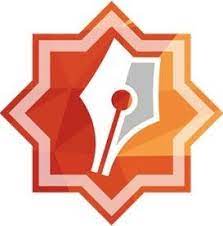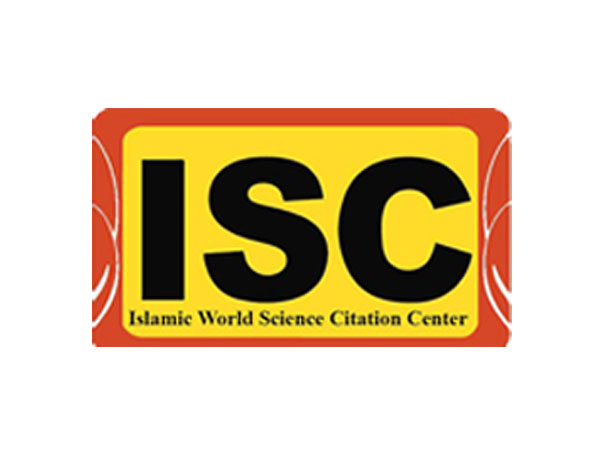About the journal
The purpose of publishing the Quarterly Journal of Iranian Islamic City Studies, publishing the achievements and results of urban and regional research, identifying and publishing indigenous views on various urban, regional, physical and spatial features and dimensions, reviewing and evaluating urban plans in the field of Islamic culture, providing solutions And indigenous perspectives on urban planning and architecture as well as the presentation of indigenous patterns in Iranian and Islamic cities
Recent Articles
-
Open Access Article
1 - Re-reading the Concept of Place-Time in the Cosmological Islamic Utopia for Guiding Contemporary Iranian Urban Thought (Origin of Idea: A Reflection on the Isfahan School)
Mozhdeh Jamshidi *Issue 58 , Vol. 15 , Winter 2025 -
Open Access Article
2 - The Impact of Islam on the Principles of Urban Planning in Iran
mino alikhani * ، neda mohammadrahimpanah ، saeid sharifkazemiIssue 58 , Vol. 15 , Winter 2025 -
Open Access Article
3 - Comparative Analysis of Proportions and Ornaments of the Entrance of Houses from the Qajar and Pahlavi Eras in Dezful
behzad vasigh *Issue 58 , Vol. 15 , Winter 2025 -
Open Access Article
4 - Explaining the Factors Affecting the Physical Space of Settlements and Housing Architecture Based on the Sayings of Imam Ali (AS) in Nahj al-Balagha
حامد حیاتی *Issue 58 , Vol. 15 , Winter 2025 -
Open Access Article
5 - Investigating the Mechanism of Monetary Policy Impact on the Urban Housing Sector of Islamic Countries )Case Study of Iran(
yousef lotfi ، Name Name * ، TEYMOUR MOHAMMADI ، Farhad GhaffariIssue 58 , Vol. 15 , Winter 2025 -
Open Access Article
6 - Explaining the Factors Affecting the Social Livability of Dilapidated Urban Areas in Islamic Iranian Cities (Case Study: District 12, Tehran)
Sina Ghayouraneh * ، hossein kalantari khalil abad ، saba jahangirIssue 58 , Vol. 15 , Winter 2025
Most Viewed Articles
-
Open Access Article
1 - Spatial Developments of Sirjan During Islamic Period Based on the Archaeological Evidences and the Written Historical Resources
hasan karimian ، Ahmad pourahmad ، Zeinab Afzali *Issue 38 , Vol. 10 , Winter 2020 -
Open Access Article
2 - Religious Spaces in the Layout and Fabric of Zoroastrian Cities; Case Study: Yazd
hassan karimian ، Fatemeh karimi *Issue 37 , Vol. 10 , Autumn 2019 -
Open Access Article
3 - Spatial Dynamics of Islamic City Based on Complexity Theory; Case Study: Tehran Central District
Hossein Hataminejad * ، Ahmad pourahmad ، Keramatalah Zayyari ، Hosein Behbodi MoghadamIssue 37 , Vol. 10 , Autumn 2019 -
Open Access Article
4 - Review and Qualitative Content Analysis of the Theoretical Origins of Urban Regeneration
Ahmad Pourahmad * ، Akbar Hamidi ، Hossein Hataminejad ، saeed zanganehIssue 47 , Vol. 13 , Spring 2022 -
Open Access Article
5 - The Impact of Megamalls on the Neighborhood Identity in Tehran; Case study: Atlas Mall
Esmaeil Shiee ، Mahsa hajiani *Issue 36 , Vol. 10 , Summer 2019 -
Open Access Article
6 - Elucidation of the physical patterns of contemporary housing based on the contextual architecture in Kashan; Case study: Selected historical houses of the Qajar dynasty
Hossein kalantari * ، Seyed Amir nezam dost ، Ali yaranIssue 38 , Vol. 10 , Winter 2020 -
Open Access Article
7 - Analysis of the executive system of renovation plans in worn-out urban textures with emphasis on worn-out textures of Tehran; Case study: Safa and Shahid Asadi neighborhoods
Hossein Kalantari Khalilabad * ، Mahdi HaghiIssue 41 , Vol. 11 , Autumn 2020 -
Open Access Article
8 - Evaluation and Ranking of Factors Affecting the Perception of Spirituality Sense in the Interior of Mosques; Case study: Nasir Al-Molk Mosque – Shiraz
MOHAMMADREZA MALEKI ، Qader Bayzidi * ، Ali Yoonessi ، Farzin CharehjooIssue 40 , Vol. 11 , Spring 2020 -
Open Access Article
9 - Identification and explanation effective factors in Fire Stations site selection in run down texture
Ahmad Heydari ، Hamidreza Joudaki *Issue 38 , Vol. 10 , Winter 2020 -
Open Access Article
10 - Economic Regeneration of urban Worn out and inefficient texture with strategic planning approach; Case study: District 10 of Tehran
Zohre tajik ، Seyed Mosa Mosavi * ، rahim sarvarIssue 37 , Vol. 10 , Autumn 2019







